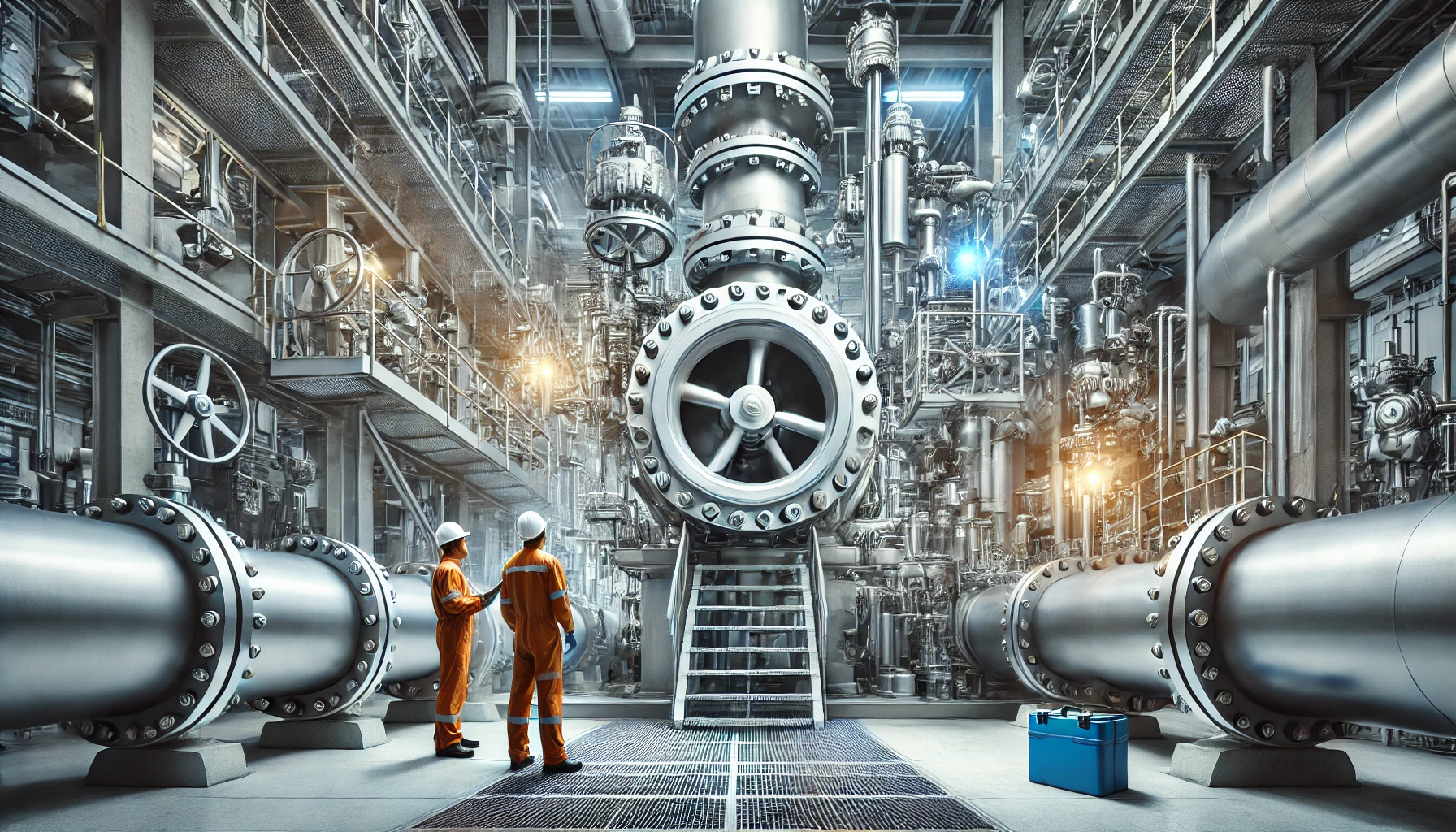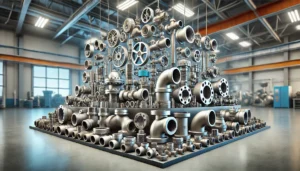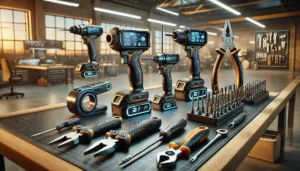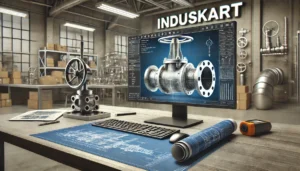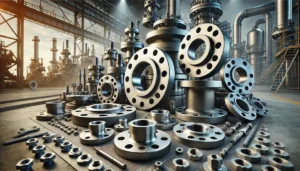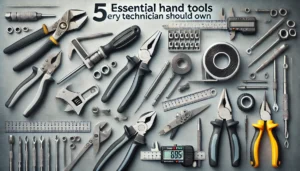In industrial applications, high-temperature and high-pressure systems employ valves that are able to withstand a lot of stress without failing or causing disturbances within the systems. It is important to choose the correct valve to ensure reliability of the system and reduce the chance of downtime or even risks of failures. In case of a mismatch in the selection of the valve, it can lead to leaks, damage to the equipment as well as higher costs of operations.
This document provides useful approaches and considerations for selecting the right type of valve to be used in high temperature and high-pressure environments, with more focus on the selection of materials, design aspects, and working conditions.
Know The Operating Conditions
The first step in picking a valve for harsh conditions is knowing entirely the operating conditions of the system. Important considerations include;
Temperature: Find out the hottest and the coldest temperatures that will be experienced during the operation. Some valves, for instance, globe or ball valves, work best in high heat, but others could warp or fail.
Pressure: Establish the most distinct pressure that the system will be exposed to. High pressure environments need high strength valves to avoid damage.
Medium: Think of the type of fluid or gas that is being moved, include factors such as viscosity, corrosive and solid particles.
Based on these parameters, the selection of the valve could be done in such a way that the material and the design aspects are suited to the application.
Material Selection
The selection of materials is one of the crucial factors when choosing a valve for the use in high-temperature and high-pressure systems. The material has to bear the thermal stresses, mechanical loads and possible chemical reactions with the medium.
Stainless Steel: Stainless steel is a well-known material when it comes to high-temperature and high-pressure applications from its high strength, great resistance to corrosion, and good thermal stability.
Alloy Steel: For very high straining temperatures, alloy steels such as chrome-molybdenum are used because they possess high mechanical attributes even after thermal stress.
Inconel and hastelloy: Nickel-based superalloys are perfect for most extreme conditions, because they resist heat, pressure and corrosive materials.
Graphite and ceramic linings: For sealing components, such as stuffing boxes, parts made of graphite and ceramics are recommended; they endure high temperatures easily.
But the most important choice of material is determined by particular conditions of the system and the transportation material.
Valve Types for Applications in High Temperature and High Pressure
Based on the structure and their working design, specific valve types can be used for extreme applications. Some of the most popular valves are depicted below:
1. Gate Valves
When it comes to the gate valves, they enable on/off control and are most applicable in high pressure systems. They ensure no leakage when fully closed hence they are optimal in containing fluid flow in the pipelines. On the other hand, they are not suitable for operations that make it necessary to open and close them often.
2. Globe Valves
The globe valves have low resistance to flow making them ideal in throttling while maintaining a good seal under high pressure. They are structurally strong enough to withstand very hot temperatures. It is have common practice to use them in steam and hot chemicals applications.
3. Ball Valves
Ball valves are robust and suited for high pressure application since they have a fast shuttering action and a stable seal. In cases where high temperature is present then it would be best to use metal-seated ball valves since they are able to withstand heat without warping.
4. Butterfly Valves
Generally, butterfly valves are used in big bore pipes and when there are high pressure requirements since they offer a good combination of light weight and effectiveness. When it’s known that high temperatures will be a factor, high performance metal seated butterfly valves are a go to.
5. Check Valves
In high pressure applications, the chances of back flow is highly anticipated which is why check valves are so important. For extreme conditions, swing check or piston check valves that can withstand the conditions will be best.
Design Considerations
A good design of a valve enables critical performance in extreme temperatures and high-pressure environments. Below are some of the points worth noting:
Sealing Mechanism: Drawings or gaskets of plastics or rubbers do not withstand very extreme temperatures thus in such cases, metal-to-metal sealing is favored.
Body Construction: Valves that offer better strength and more endurance towards pressure systems are forged ones compared to cast valves.
Stem Design: In applications where temperatures are extremely high, non-rising stems or stems with specifically designed extended bonnets help keep the actuator more cooler by reducing transmission of heat.
Flow Control: When designing the valves, a design that eases the flow for the valves ensuring low pressure and minimal turbulence is essential.
These additional features that the element of design provides for enable the valve to withstand extreme conditions of functioning with great reliability.
Testing and Standards Compliance
Good quality valves for containment of high temperature and high pressure should meet the requirements of the different world standards to assure safety and proper functionality. Always check for caveated valves including the following:
ASME (American Society of Mechanical Engineers): a companion certification on the pressure and temperature ratings applications to valves.
API (American Petroleum Institute): this will set the requirements for the valves regarding oil and gas services.
ISO (International Organization for Standardization): it includes the performance and quality requirements also in general.
In addition they should also perform hydrostatic, thermal and pressure tests to confirm that the valves will perform well under such wild conditions.
Installation and Maintenance
It is very critical to follow correct installation procedures as well as maintain the records of the valves used in critical areas. To achieve this goal;
The design features of the pipeline, such as the fittings pattern, should be taken into consideration when installing the valve so as to prevent physical forces from being transmitted to the body seal.
Manufacturer’s guidelines regarding the torque settings of bolts and fastening elements are adhered to minimize leakages.
A maintenance plan must always involve regular inspections to identify and rectify early signs of wear, corrosion or thermal effects.
Other activities include lubrication, cleaning, or even replacement of the components of valves, all of which preserve their functionality and effectiveness within a given duration.
Common Issues and Their Solutions
High-temperature and high-pressure systems often experience some of the following problems-
Thermal Expansion: Installation of expansion joints or flexible couplings to transfer thermal expansion away from locations where damage may occur.
Corrosion: Adequate use of corrosion-resistant materials and protective coatings on aggressive media containing systems.
Cavitation and Erosion: Incorporation of anti-cavitation trims or other devices that will mitigate the effect caused by the fast flows, minimizing or eliminating damage.
Attention to these issues effectively enhances the systems reliability and safety.
Conclusion
Valves in hydraulic systems can be complex in their configurations and manufacture. Yet, if high-temperature and high pressure valves are to be targeted, it is crucial to understand the requirements of the operating conditions by taking into account material properties and engineering design features. As long as performance is guaranteed through proper installation and maintenance, the use of high-performance materials in valve manufacturing coupled with strict adherence to the standards can optimize system performance and minimize risks. This move not only protects operations but also increases efficiency since the right approach will allow valves to withstand such severe conditions.

